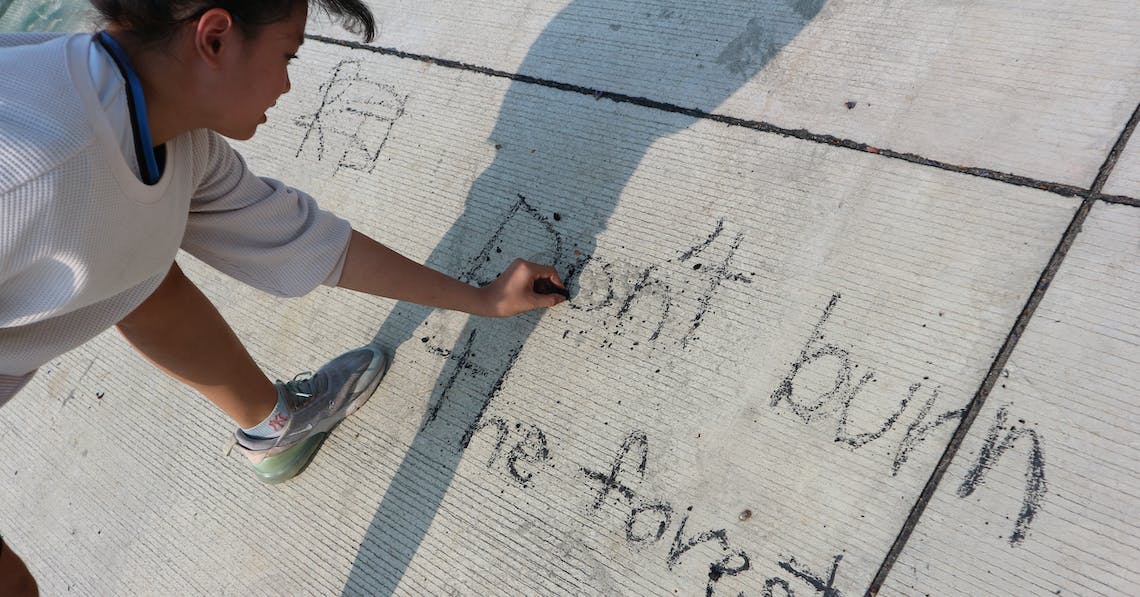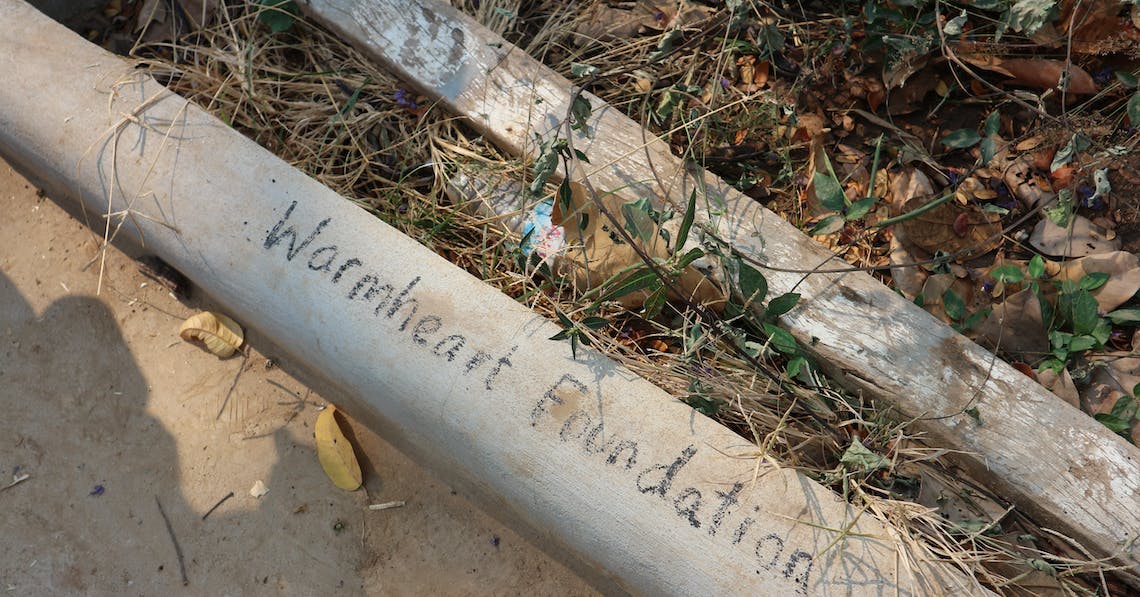Last week, a group of around 150 Varee school students spent the day with Dr. Michael Shafer, Director of Warm Heart Foundation. A grassroots organisation that empowers rural Thai villages through community-based initiatives, Warm Heart’s student outreach focused on teaching students about the threats of the current air pollution and the foundation’s efforts to reduce its levels through the use of biochar. Stutdents were also inspired and empowered to get involved in the fight against this existential threat to our environment through hands-on activities. Wearing a ‘Got Heart?’ t-shirt, the engaging, eccentric and passionate Shafer commanded the rapt attention of the students as they were horrified to learn of the very real dangers of the air pollution, followed by a workshop in Varee’s community garden, where students split into small groups and actually made their own biochar ovens.
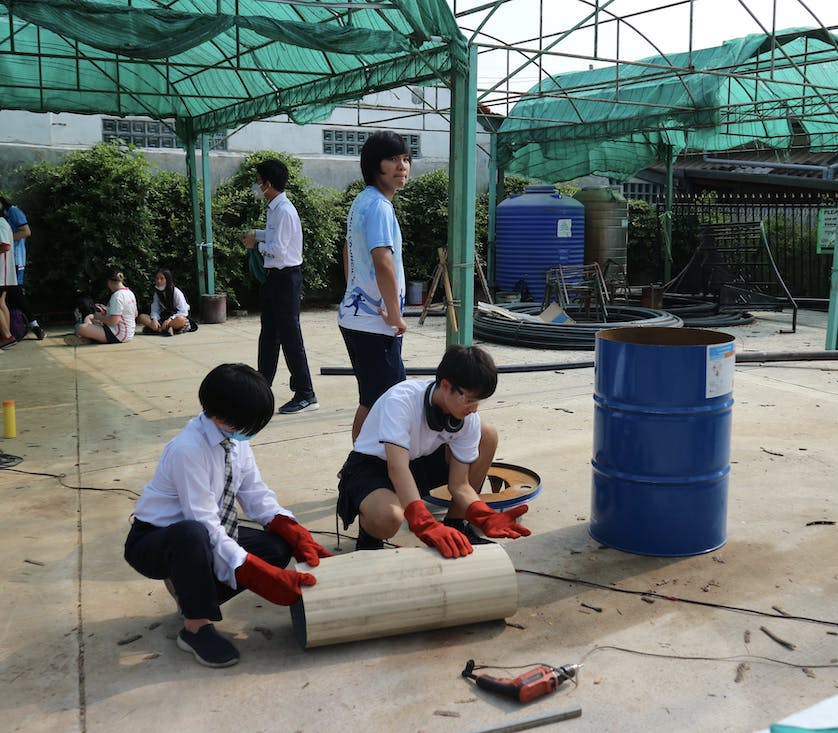
What is biochar?
If you are not already familiar with what biochar is, it is a very simple product that can be used to stop the root of a significant amount of pollution. Citylife has written extensively about Dr. Shafer’s efforts and the benefits of biochar, which you can read about here, here and here.
In short, biochar is solid smoke. It is essentially coal made from the (smoke- and oxygen-free) burning of green waste, or biomass. Biomass is any renewable organic material that comes from plants and animals. In biochar ovens, materials that make up this biomass – in Northern Thailand’s case, mainly corn stubble – gets completely burnt up, reducing what’s left to contain 40% of the carbon absorbed from the original biomass. According to Dr. Shafer, this is biochar. What remains are called briquettes, which can be used to generate electricity, heat, and as cooking fuel.
The best part of the day was when students put together their own biochar ovens with metal barrels and safety tools. The excitement filled the air as they waited to start building. Students were surprised to learn that it only took two hours to build a biochar oven from scratch, something any farmer can do by simply looking at the manual found on the Warm Heart Foundation website. With an oven, any farmer can create briquettes, which the foundation is working on opening up markets for. This will mean that instead of burning stubble which contributes vast amounts of pollution particles to the air, farmers can safely burn their waste while also earning more money.
Students were given dried up corn, though Dr. Shafer explained that any dry green waste such as wheat straw or rice can be used, and soon groups of teens were busy producing their own briquettes. “Once made into biochar, it will stay as biochar forever,” explained Dr. Shafer to the students.
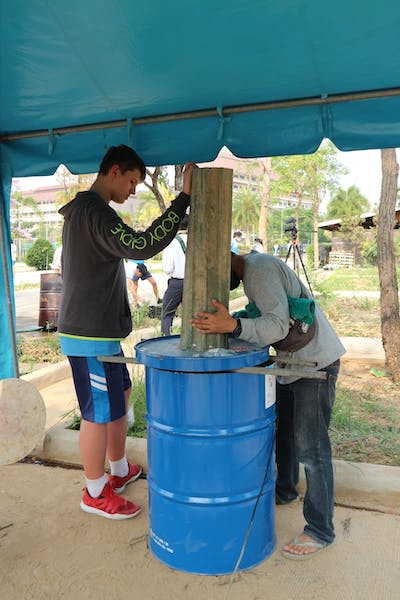
How can a lump of coal help?
“The main idea is what you want to achieve out of this. Whether it’s economic, personal, or social. With biochar, the maximum social achievement is met,” said Dr. Shafer, who went on to name some of the benefits of biochar: people, profit, and the planet. “Biochar and the usage of biochar can benefit communities by allowing everyone to be involved in the process,” he continued. “Whether it’s making the ovens or selling the biochar briquettes, unlike machines which involve high and expensive technology with the main goal of minimising human labour, biochar takes the opposite approach. There will be room for everyone on this journey,” Dr. Shafer said, excitedly, explaining that income can be generated in communities, however remote, while the planet is also being cared for by stopping the spewing of harmful smoke into the atmosphere and reducing carbon emissions along the way. Biochar can also introduce new methods of cooking and fuel by substituting wood or charcoal with biochar for daily life use. Should a market open up, replacing wood and charcoal with biochar, then farmers would be able to potentially double their income from any crop.
“There are potential financial incentives from waste turned into riches while solving this pollution problem at the same time. We approach it from many angles here,” added Ms. Helen, a science teacher, going on to say that biochar offers a different lens to sustainability and approach to Chiang Mai pollution problem.
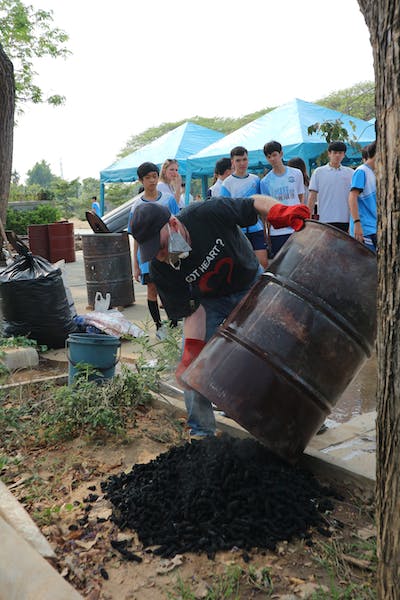
Possible solution to pollution?
This pollution in Chiang Mai is not new. Starting in January at worst and March at best, it can last until late May, as our beloved and sacred Doi Suthep is enveloped in a cloak of hazy invisibility.
“The levels of pollution in Northern Thailand means that all 6.5 million people living here – every man, woman, and child – would have to smoke 48 cigarettes an hour, 24 hours a day, for 365 days a year for the entire year to generate the same amount of smoke,” said Dr. Shafer to a stunned student audience.
Students were visibly shocked and upset, with one 7th grader speaking up, “Air pollution surrounds so many people. Students have to know about this to start protecting our lungs. If we don’t see the bad effects of pollution on them now, it comes as consequences later in their life.”
For those of us living here, masking up is a must and air purifiers become a crucial part of everyone’s home…as long as they can afford it. Yet, in spite of decades of conversation, research, health warnings, and dramatic clashes with authorities, the solution seems out of reach as we all eagerly await the year’s first monsoon rains. The problem is that because there is no single source to blame for the pollution, there is also no one solution. Dr. Shafer and the Warm Heart Foundation offers communities across the region a possible and feasible solution for at least one significant source of smoke: biochar to reduce agricultural waste burning.
This seminar at Varee International School shows that it is more important than ever for students to understand the impact of pollution and tackle them with creative solutions. The hands-on approach hitting home to just about all students asked.
“We can teach the problems to younger people and we can help fix it. We don’t have to grow up to be people who contribute to polluting the earth,” said an 8th grader mid oven construction.
Her friend chimed in agreement, “Air pollution will affect future generations. The more people help, the quicker it will be helped. If people don’t, it will get worse every day.”
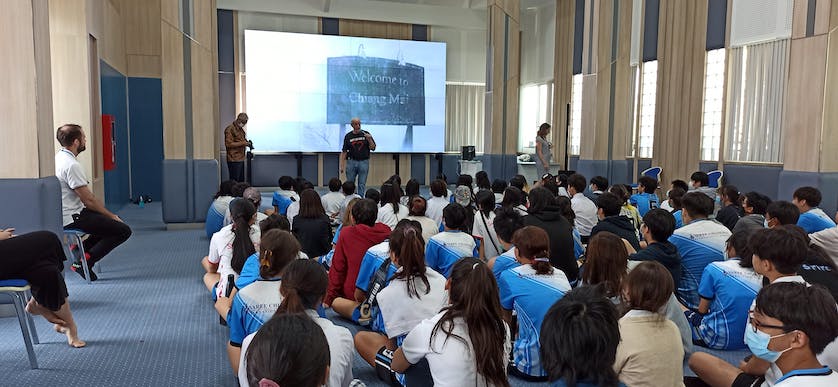
As we stool over our newly-minted ovens as they furiously burnt down our corn, one tenth grader commented, “Our generation now are the ones most affected by it and the generation before us were the ones to cause all these problems. We were just born here and brought into this world. I think it is important for us to learn about it so we do not make the same mistakes as they did. We have better machines, developments, education, and we are more informed on all these pollution topics. We are equipped with the skills and the ability to do something about it. We matter a lot in this era of climate change.”
Ms. Helen added, “I hope when I look at my students, I look at them as the future of tomorrow, the leaders of today. I really hope that they will see and be inspired by people who are working to combat this problem. The Warm Heart Foundation, for instance, is the change. They are doing the work and can inspire our students to realise that there are solutions and that education and circular sustainable solutions are possible. They show us that we can do anything and that nothing is too hard, and I hope that the students think that as well.”
“It is their world, if they don’t do something about it, it’s not going to be worth living in,” said Dr. Shafer, driving home the importance of the students’ generation’s efforts in helping better our environment. “It’s their world and right now if they don’t think it’s their responsibility to take care of it, then nobody is going to do it. We’ve screwed it up and we’re all dying. They have to take care of it themselves. Take care of it for their own children. Take care of it for their children’s children. If they don’t change their mentality, it’s theirs. They are responsible for it and it will only be as good as they make it and leave it or it will keep getting worse.”
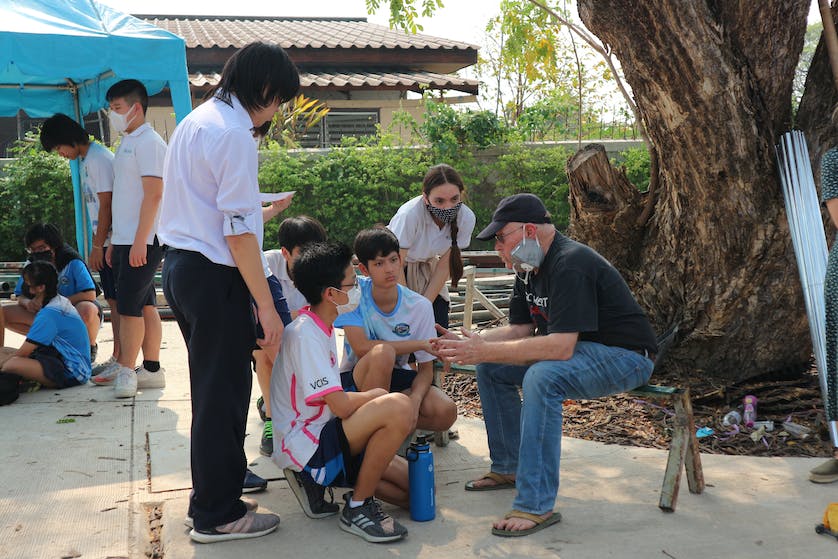
Dr. Shafer engaged the students, inspired them, and made them laugh, the day being a resounding success and the grave message clearly resonating. Students also emerged feeling as though they could be active and positive agents in the fight against pollution and climate change. By introducing biochar to students, he offered them a quick example of creative innovations for tackling problems. The Warm Heart Foundation is one of many groups and individuals involved in taking initiatives towards a community-based solution. Varee students learned a valuable lesson: everyone is affected and everyone can be part of the solution. Similar to biochar, there can be other ways to tackle this as well. However, it truly comes down to whether we put in the work or not. The problem is current, but with thorough education and community engagement, Chiang Mai can fight through this together.

Links and contacts
Read more about biochar: https://warmheartworldwide.org/biochar/
Read more on Stop the Smoke 2021: https://warmheartstopthesmoke.weebly.com/
Support the Biochar Funds: https://warmheartworldwide.org/biochar-fund/
Support the Warm Heart Foundation: https://warmheartworldwide.org/donate-2/
Further events…Support the effort at the Stop the Smoke dinner: https://www.chiangmaicitylife.com/clg/see-do/music-scene/support-the-effort-at-the-stop-the-smoke-dinner/

